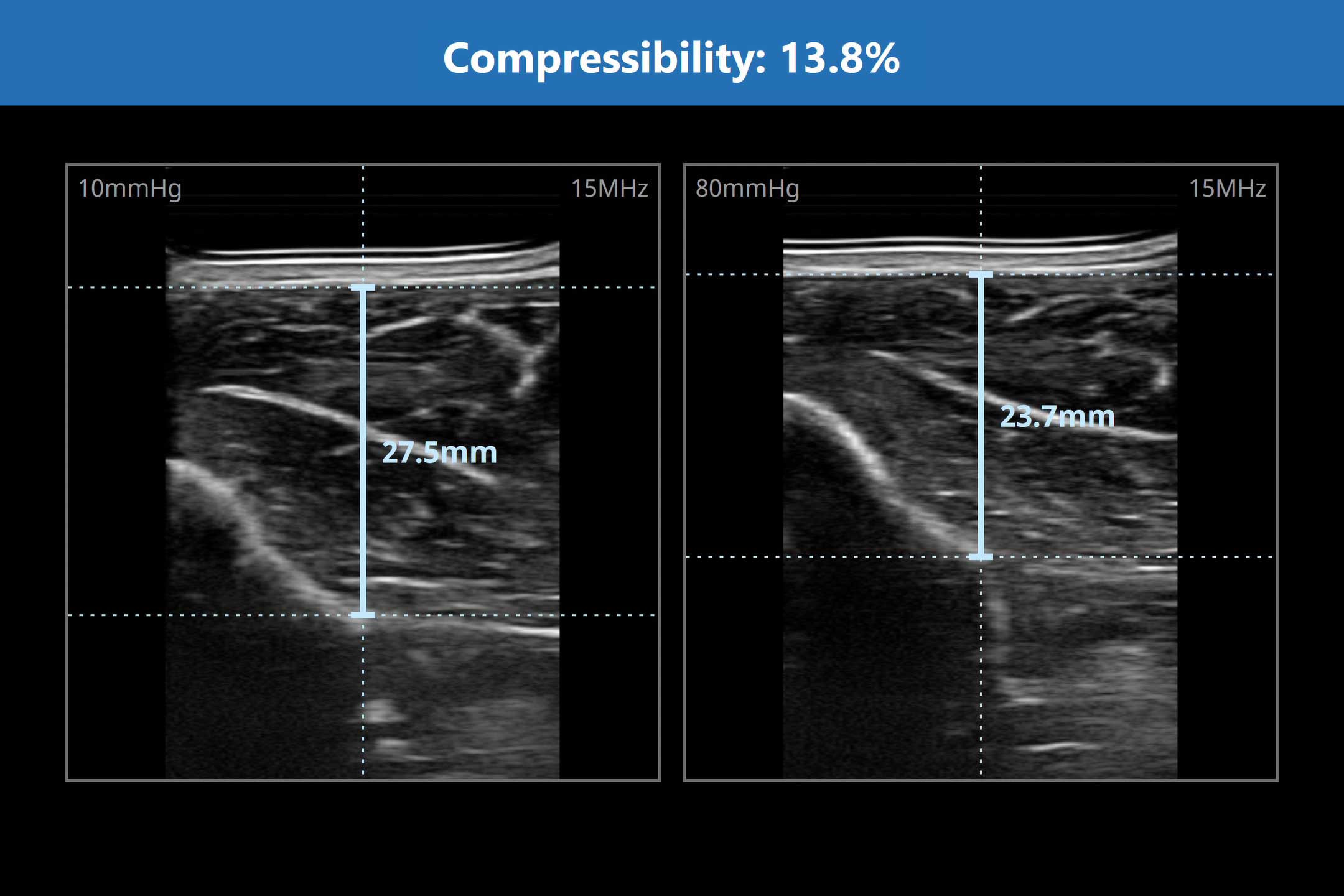Clarity through Quantification
Compremium
Quantis ST
The new solution to quantify soft tissue. Bringing non-invasive, objective, standardized measurement to every stage of ortho trauma care.
✓ CE-Marked
✓ FDA-Cleared
✓ FDA-Cleared



The Blind Spot in Ortho Trauma Care
Trauma care sees the bone.
But soft tissue determines recovery.
But soft tissue determines recovery.
Bone is static.
Soft tissue is dynamic, changing hour to hour.
Yet palpation and imaging only capture a moment in time and cannot reflect evolving soft tissue conditions.
Surgeons are trained to fix fractures, but with soft tissue:
- Decisions rely on “subjective feel”
- Assessment varies between clinicians
- It can deteriorate in hours
Compremium Quantis ST brings this blind spot into view. Objectively, consistently, and in real time.
What is Compressibility?
Soft Tissue, Quantified.
A new standard for assessing soft tissue
Compressibility is a quantified metric that measures how soft tissue responds to pressure, reflecting swelling, tension, or resilience. It provides a dynamic view of tissue health, in real-time.
Why it matters.
- Soft tissue changes rapidly
- Repeated exams are inconsistent
- Subtle deterioration can go unnoticed
- Quantification brings clarity to evolving conditions
Where it fits.
From triage to discharge, compressibility supports clinical decision making with facts, not feel.

Clarity at Every Step
The Compremium Quantis ST brings physicians Clarity through Quantification.
Objective
Measurement
Measurement
Quantifies soft tissue compressibility under defined protocols.
Reliable
Consistency
Consistency
Supports reproducible assessment across clinicians and teams.
Workflow
Efficiency
Efficiency
Complements clinical findings and provides full documentation.
Clinical
Confidence
Confidence
Enables more assured decisions based on measurable tissue readiness.
Proven &
Approved
Approved
CE-marked and FDA-cleared for clinical use.


From Triage to Discharge.
Designed for Every Stage of Care
1. Triage
Identify soft tissue compromise early
2. Pre-Operative
Validate readiness for fixation based on measurable data
3. Post-Operative
Monitor tissue response and progress
4. Discharge
Confirm stability before release
The Quantification Manifesto
When experience meets evidence, clarity becomes possible.
For decades, soft tissue has guided decisions, but only through experience and touch.
Compremium Quantis ST gives soft tissue a measurable voice, turning subjective impressions into quantified insights.
From triage to discharge, we bring clarity to the moments when precision matters most.



